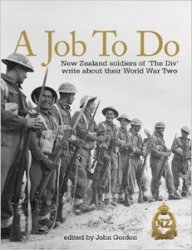Yom Kippur, the Day of Atonement, 6 October I973> found most Jews in Israel in their synagogues. Over 700 Syrian tanks attacked the Golan Heights while Egyptian units swept across the Suez Canal into Sinai, taking the Israelis totally by surprise on the day when even most Israeli soldiers were not on duty. The afternoon of the 6th and that evening, Egyptian forces crossed the Canal at three key points, bringing with them heavy armored units. The first line of Israeli defense, the Bar-Lev Line, was soon taken. As air raid warnings were heard in Jerusalem, a stunned Israeli public became aware that the fourth Arab-Israeli War was in progress. The radio broke its traditional holy day silence at 1440, and soldiers on leav'e were pulled from their synagogues to return to the fronts. Syrian thrusts on the Golan Heights threatened to cut Israeli forces in half, and their early capture of Mount Hermon enabled the Syrians to range their artillery against Israeli positions. By the third day of the war the Golan front seemed to stabilize, but Egyptian forces continued to pur into Sinai. This was to be no Israeli rout as in 1967. Complacency had given way to terror, as Israeli civilians feared that this time their presumed armed superiority might be in doubt. By 12 October, the sixth day of the war, the three Egyptian bridgeheads across the Suez Canal had widened into a broad front controlling the whole west bank of the canal.
When Israel swept across Sinai in 1956 and 1967 there were only three ways to get through to the Suez Canal: the Mitla Pass, the Gidi Pass, and the Khatmia Pass. The alternative was the northern route across the top of the desert between the Sea of Sand, impossible for tanks to penetrate, and the Mediterranean. The Egyptian armored legions faced the same choice if they were to drive Israel out of Sinai. Saad Shazli, the Egyptian Chief of Staff, urged a further push into Sinai, preferably along the northern route, since the three key passes were heavily defended. As Russia airlifted new supplies to the Syrians, they began to fall back from their newly-won positions, but when the Israelis penetrated Syria as far as Saasa, the second line of Syrian defense held fast, protecting the road to Damascus.
The first week of the war ended inconclusively, with Syria on the defensive in the north, but Egypt holding their western bank of Suez. On Sunday, 14 October, one of the greatest tank battles in history took place near the Israeli defensive position guarding the Gidi and Mitla Passes. Something like 2000 tanks fought bitterly, compared with the 1600 which fought at El Alamein in 1942. Super-Shermans, similar to those used by Montgomery at Alamein, were used by the Israelis, while the Egyptians were equipped with T-34’s, used at Kursk in 1943, and the more modern T-55’s and T-62’s. But the Centurions and Pattons the Israelis also had were superior in desert warfare to the Russian equipment because of their range of fire. The greater comfort the American tank gave to the crew in comparison with the Russian models became an important factor in the torrid heat of the Sinai Desert. By the evening of 14 October the major Egyptian thrust had been broken. Israeli lines held. It was now time to move to the counterattack.




 World History
World History









